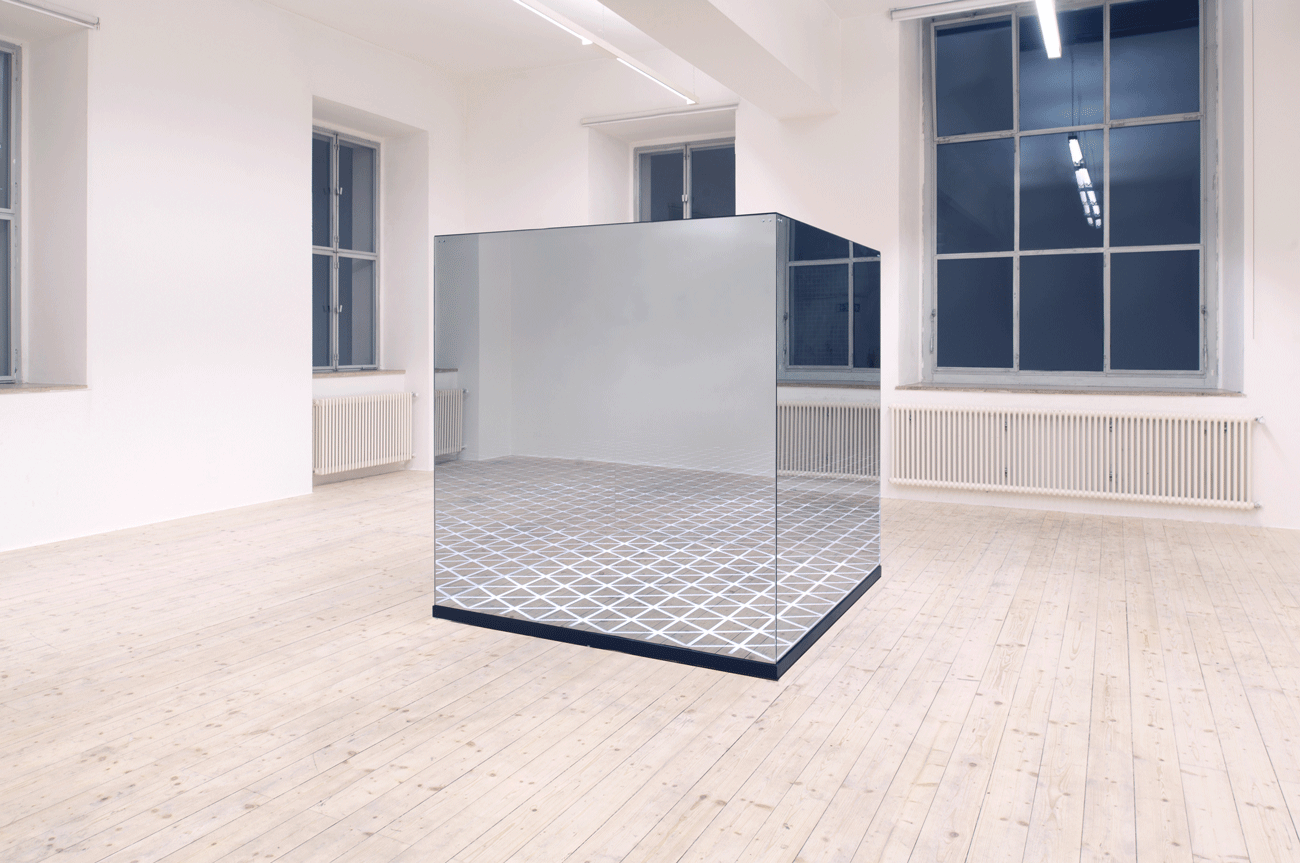Mirror, LED’s, aluminium,
acrylic glass, wood
185 x 180 x 195 cm
The work at first glance, is perceived as a 195 x 185 x 180 cm dimensional mirror cube. After a short time, one notices that the created reflection does not correspond exactly to the reality. The installation reflects and merges the recipient, his environment and a horizontal infinite white grid together.
When approaching the installation, one notices that the four surfaces are made of semi-transparent mirrors, which allow an insight into the cube. The white illuminated hexagonal grid on the black floor is illuminated from underneath. The four inner mirror-walls reflect the grid multiple times and create thus a infinite, abstract space. The ideal character of that space is reinforced by the fact that the space remains inaccessible and untouchable behind the walls of glass.
The reflected grid, which forms the abstract space, leans on our orientation system. Humans dispose of brain cells that produce a hexagonal grid through which we are orientating ourselves. The work makes it plain that space is foremost a mental projection. It provides a direct sensual experience of the questions triggered by our relationship to space and our concept of it.


Here and there, 2017
Mirror, LED’s, aluminium, acrylic glass, wood
185 x 180 x 195 cm
The work at first glance, is perceived as a 195 x 185 x 180 cm dimensional mirror cube. After a short time, one notices that the created reflection does not correspond exactly to the reality. The installation reflects and merges the recipient, his environment and a horizontal infinite white grid together.
When approaching the installation, one notices that the four surfaces are made of semi-transparent mirrors, which allow an insight into the cube. The white illuminated hexagonal grid on the black floor is illuminated from underneath. The four inner mirror-walls reflect the grid multiple times and create thus a infinite, abstract space. The ideal character of that space is reinforced by the fact that the space remains inaccessible and untouchable behind the walls of glass.
The reflected grid, which forms the abstract space, leans on our orientation system. Humans dispose of brain cells that produce a hexagonal grid through which we are orientating ourselves. The work makes it plain that space is foremost a mental projection. It provides a direct sensual experience of the questions triggered by our relationship to space and our concept of it.